With Godzilla films on the wane, (sales plumetted nearly a million tickets between Ghidorah the Three-Dead Monster and Ebirah, Horror of the Deep) Toho decided to court the very same audience that the Gamera franchise was aimed toward: children. And what better way to target kids than to give Godzilla a son of his own? Ultimately, the strategy didn't work. If Toho thought the previous drop, a million ticket decline in two films was bad, Son of Godzilla sold a million less tickets than Ebirah.
In what could not possibly happen in an American film, we have a group of scientists conducting a secret experiment in order to better the world. Their aim is to make dry lands habitable, and at the same time realize that the technology could be abused by irresponsible or evil people. This is very different from the American view of scientists, whoch begins on a platform of mistrust. Even films or TV series that ostensibly favor brilliant scientists, such as Euraka, often show sceince as an inconsistent ally at best, and a barely-understood menace at worst. The Godzilla franchise, and Japan in general, has a more ambivalent view towards science and scientists. Even though the initial experiment goes rather awry, the island scientists continue their work.
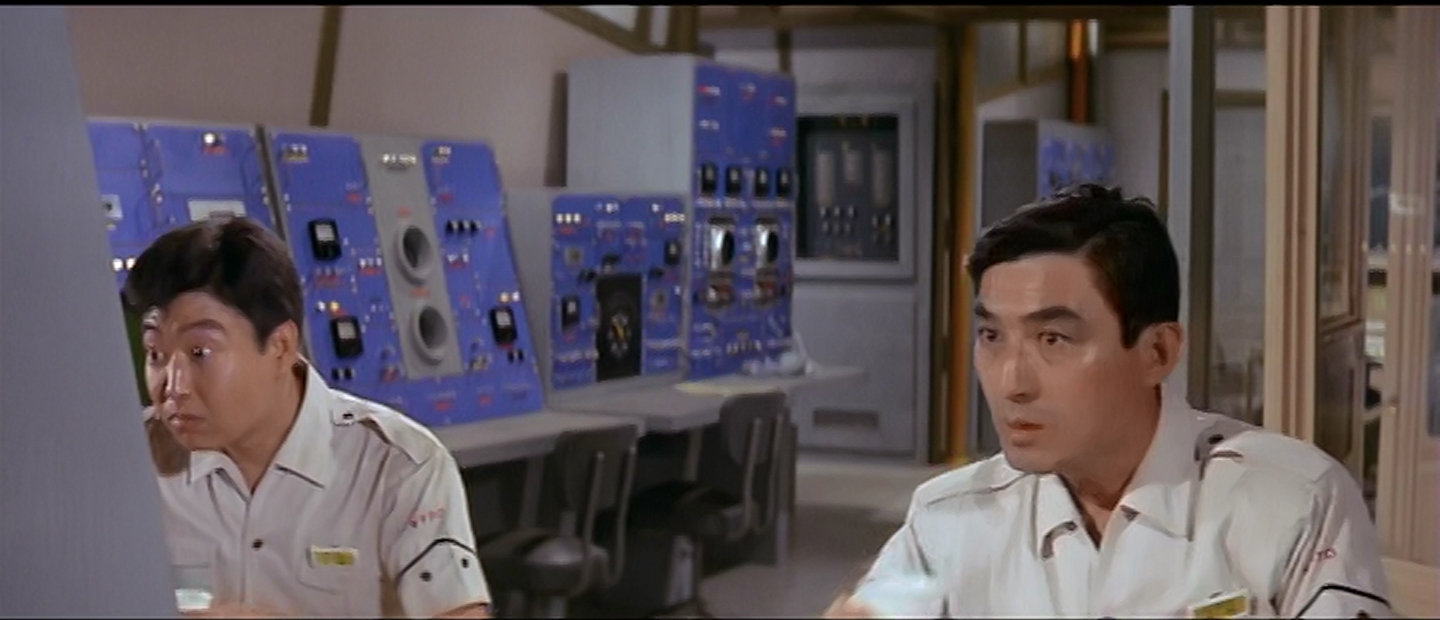
The monster work is fairly unique. Eiji Tsubaraya only 'oversaw' the effects in Son of Godzilla, with Sadamasa Arikawa doing the daily work of putting the monsters on screen. And the results, overall, are good. The island mantises, Kamacuras, are large, menacing marionettes, an interesting change from the usual guy in a suit monsters. Kumonga, a giant spider, is also a marionette, and looks excellent.
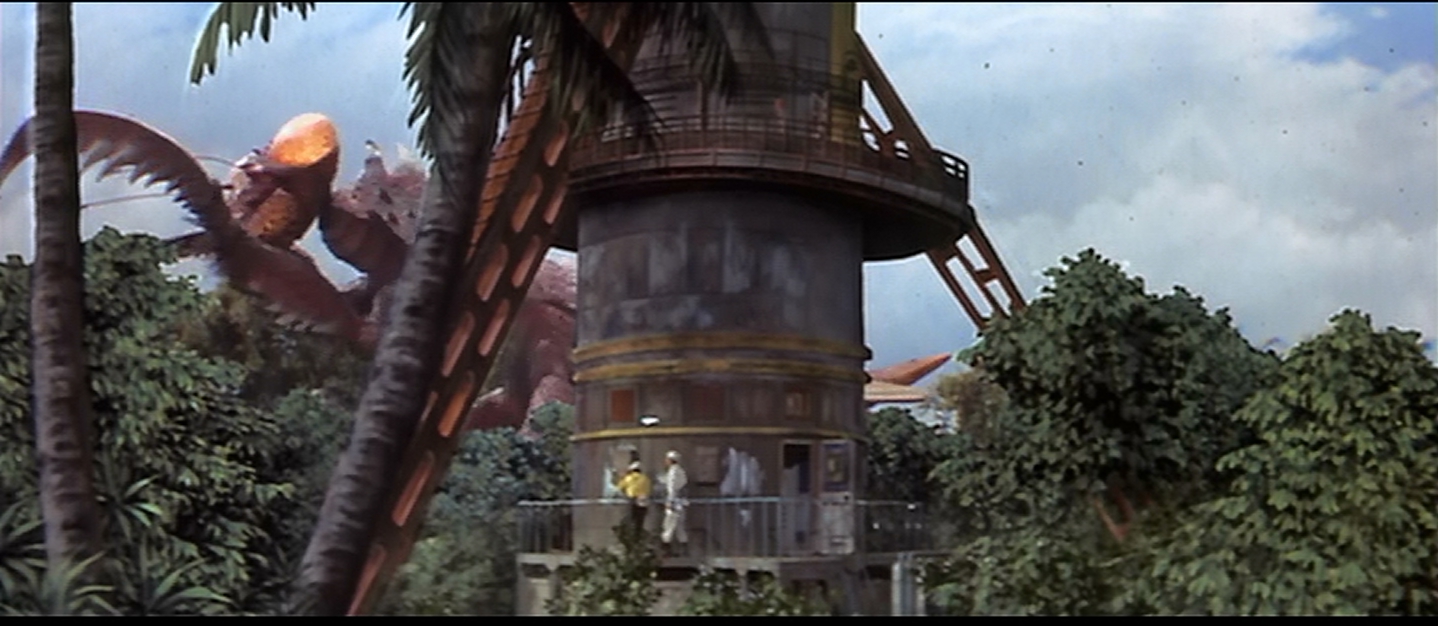
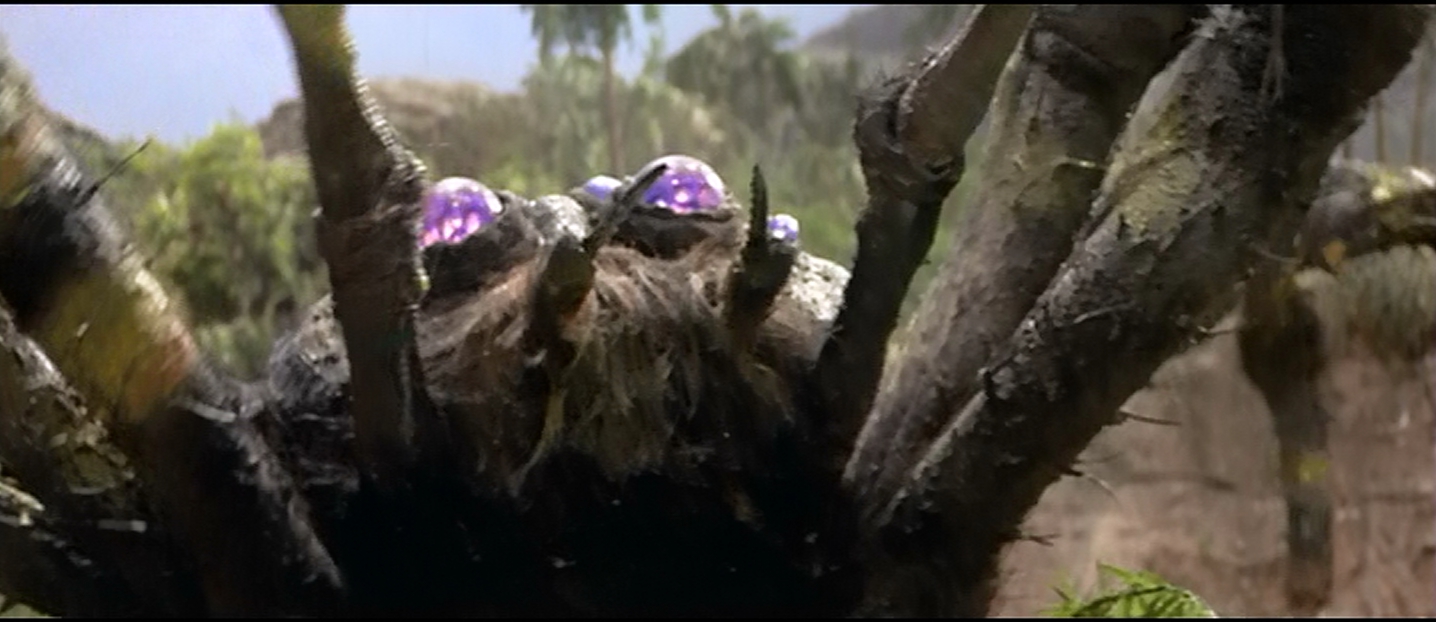
The same cannot be said for Godzilla Junior, Minilla.
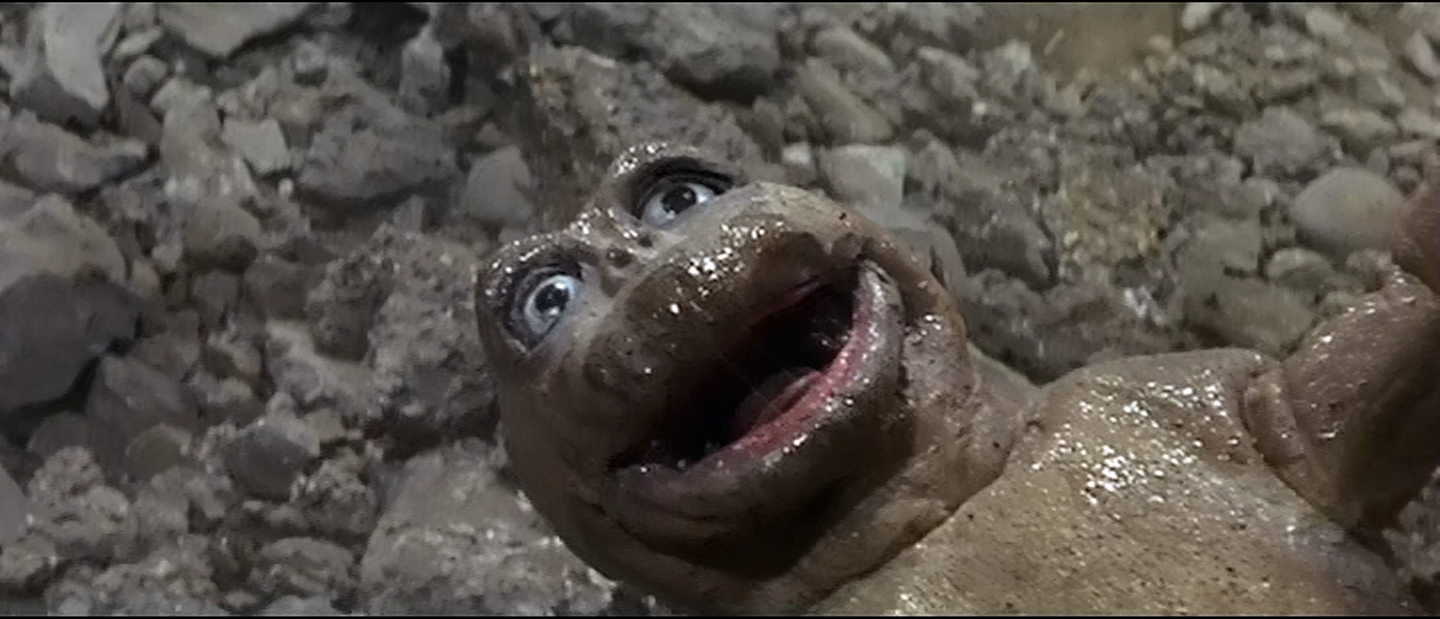
The creation of a junior Godzilla is problematic at best. Although this film brought in much less than the previous film, and the more adult-oriented extravaganza Destroy All Monsters at least didn't lose ground, Toho continued their disastrous course of making Godzilla films that were more and more aimed toward children. The same continued to be true into the Milenneum series. The adult-oriented Godzilla, Mothra and King Ghidorah: Giant Monsters All-Out Attack grossed close to twenty million dollars, doubling the take from Godzilla vs Megaguirus, and bringing in four million more than the the next film, Godzilla vs Mechagodzilla. But Toho refuses to see the film as anything more the kids fare, to the detriment of the films, and to their own financial loss.
Minilla is an amalgamation of everything cute that the writer and director could think of. It coos like a baby, wags its tail like a dog, chases its parent's tail like a cat, has tantrums when it doesn't get its way. Minilla is everything that adults think kids want, and the result is overpoweringly saccarine in a film franchise that began as a metaphor for nuclear testing.
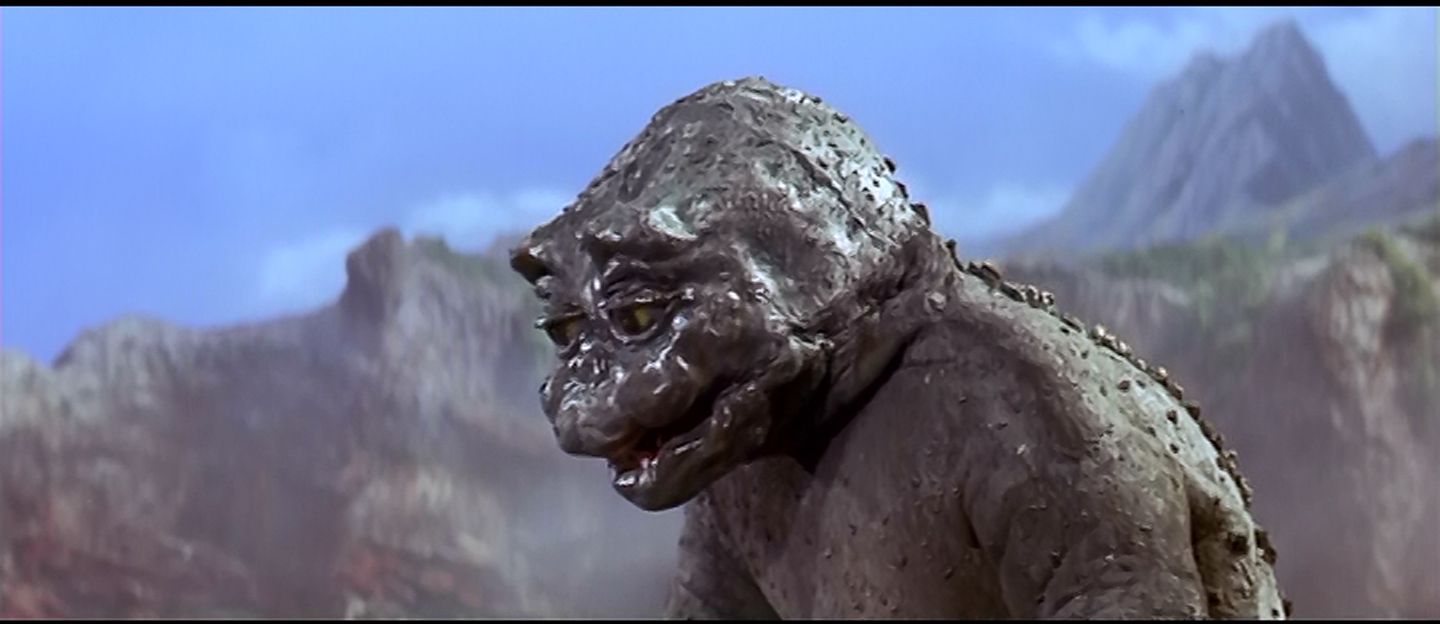
Godzilla doesn't look quite right, either. To make him look less threatening, he's got large eyes and a narrow head. The head of Haruo Nakajima looks like a goiter in Godzilla's throat.
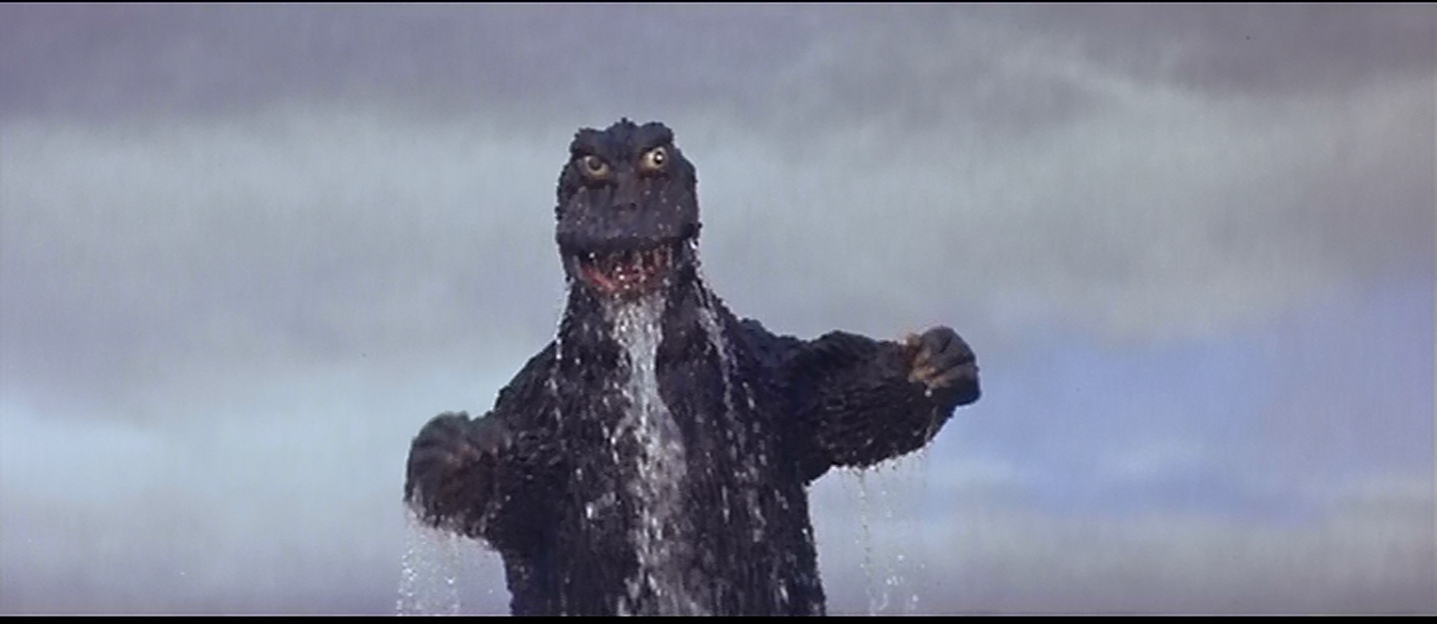
Several of Jun Fukuda's favorite tropes return here. As with Ebirah, this island has a competent, wild jungle woman as a love interest. She has some control over Minilla, as the Red Bamboo had over Ebirah. Monster-control would be more fully developed in Ishiro Honda's Destroy all Monsters. Once again, a gigantic monster is buried on an island, although this time, it's Kumonga, rather than Godzilla.
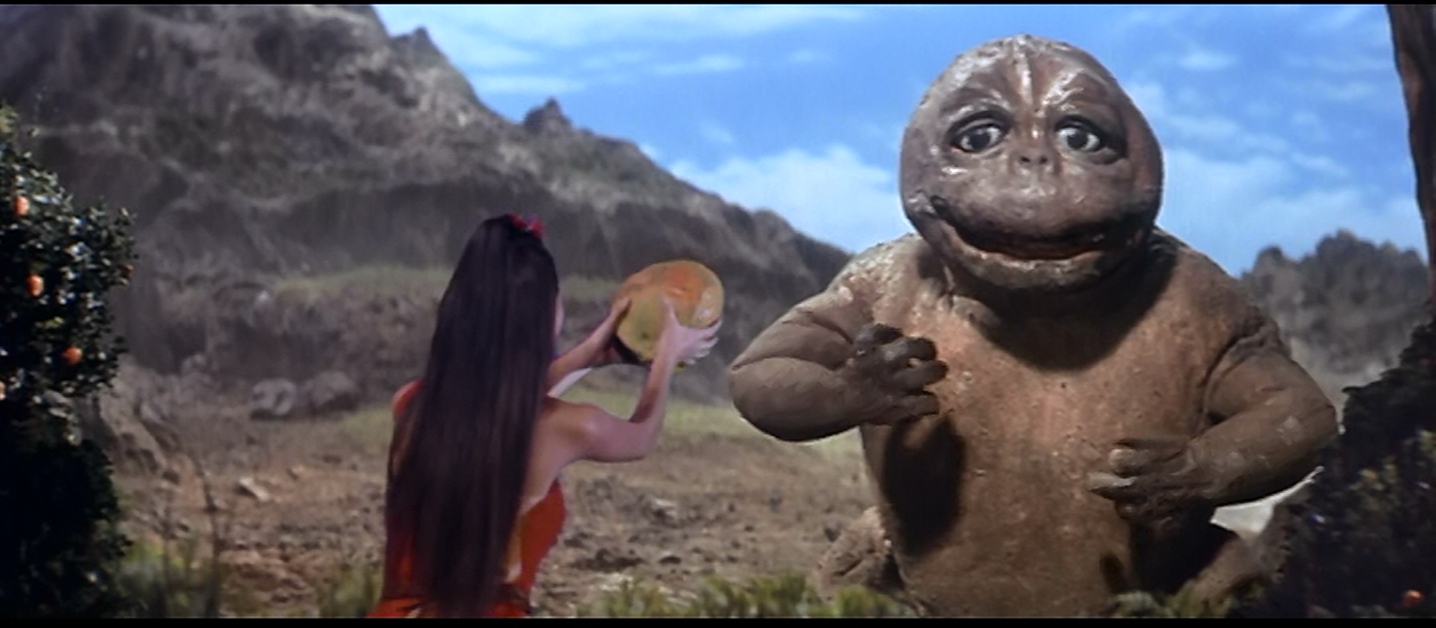
And the monster action, when there is action, is pretty good. Godzilla lays the atomic smackdown on the Kamacuras and the Kumonga. However, there are long period in which he interacts with Minilla, acting as a father figure. How did the gigantic avatar of destruction come to be a father standing over his son?
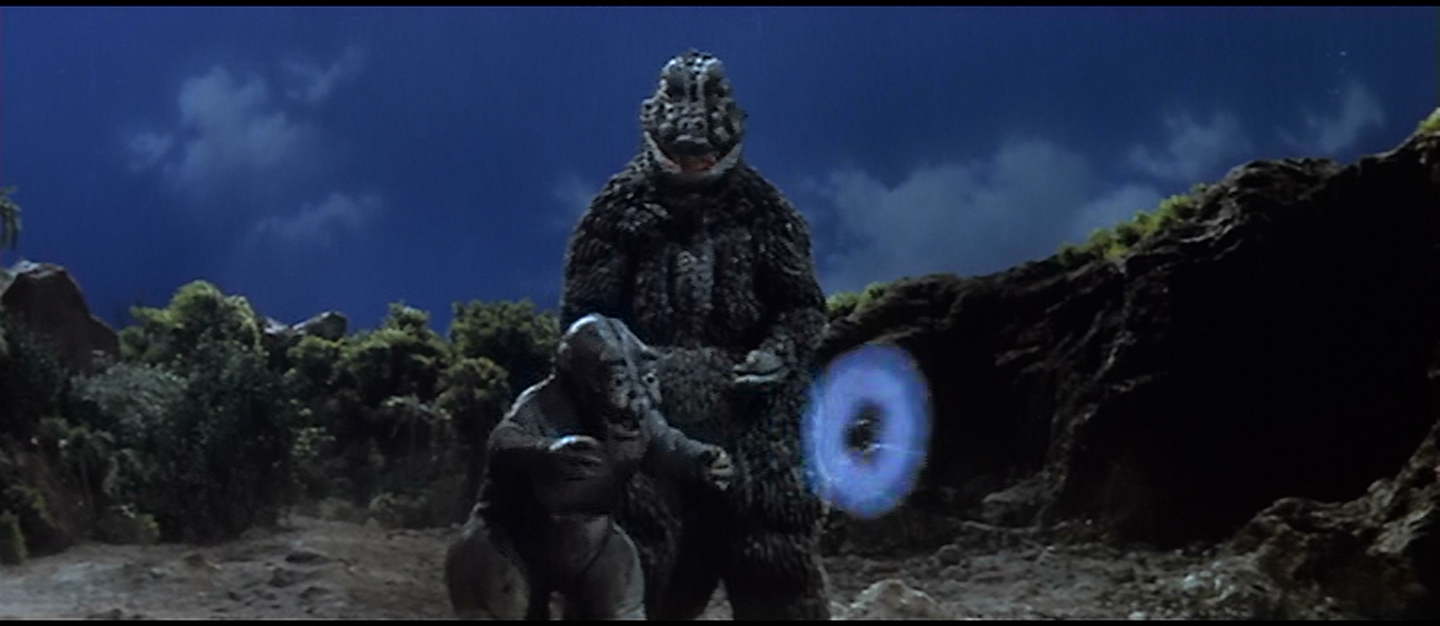
Son of Godzilla is close to the worst of the Godzilla franchise. The human action is inane, the monster action, although there is a lot of it, is generally ruined by Minilla mugging, cowering, and making "adorable" noises. Next week, Gamera hits just about the same note.
No comments:
Post a Comment